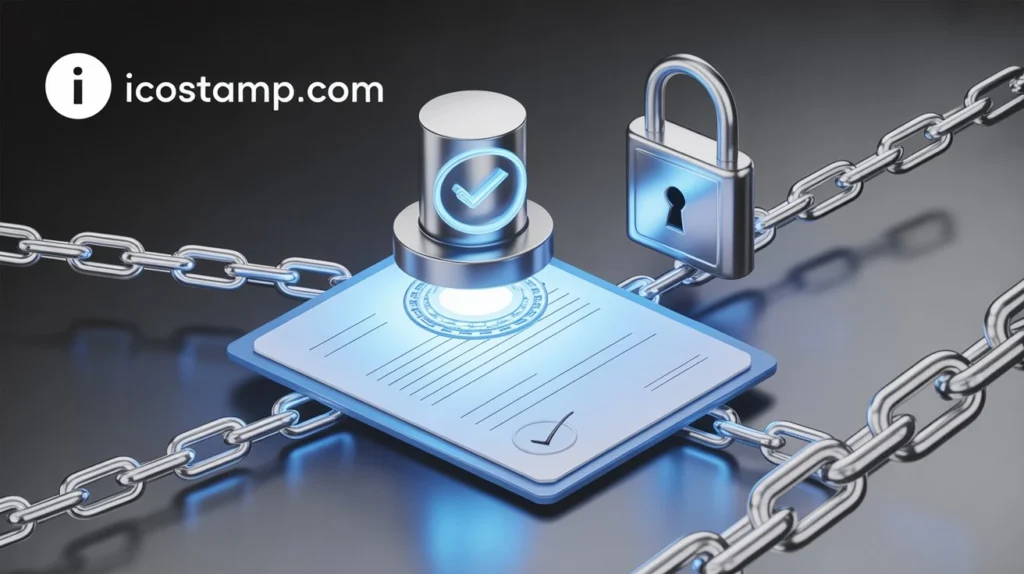icostamp.com stands at the crossroads of security, authenticity, and digital timestamping. Many users come searching with curiosity or need—perhaps to verify document integrity, secure corporate communications, or leverage timestamping in blockchain or legal contexts. The keyword icostamp.com suggests a desire to understand what this platform offers, how it works, and whether it can be trusted. This article responds fully to that intent by explaining the platform’s core function, exploring its benefits and pitfalls, offering real-world examples, and guiding you step by step through its use. That knowledge builds confidence and supports informed decisions when dealing with sensitive timestamps or certificates.
Definition and Purpose of icostamp.com
icostamp.com appears to function as a digital timestamp and certificate issuance platform. In essence, it allows individuals or organizations to generate time-verified stamps or certificates associated with documents, data, or events. The “ico” part may imply “integrity check” or “institutional certification,” while “stamp” clearly conveys marking something with an authenticated timestamp. Such a platform can serve legal, compliance, archival, intellectual property, or blockchain validation use cases.
The key value lies in providing verifiable proof that a given piece of content existed or was signed at a specific point in time. That timestamp, once anchored—whether in a trusted timestamping service, a blockchain, or internal secure logs—becomes a tamper-evident assertion of authenticity.
Benefits of icostamp.com
Using a platform like icostamp.com offers several compelling advantages. It streamlines trust: users don’t need to set up complex PKI systems or manage their own timestamping servers. Instead, they can rely on a unified, web-based interface.
Authenticity and non-repudiation are core benefits. If you stamp a contract, a piece of creative work, or audit record via icostamp.com, later disputes about whether that content existed at a given time can be resolved via the immutable stamp.
Convenience and speed also matter. Rather than waiting for manual notarization or legal signatures, you get near-instant stamping with cryptographic assurance. This aids efficiency in fast-paced environments like publishing or software releases.
Interoperability may also be present—if icostamp.com supports standard formats like RFC-3161 timestamps or blockchain anchoring, it becomes easier to integrate with other software, audit tools, or legal workflows.
Challenges and Considerations
Despite these benefits, there are caveats. Trust in the platform is crucial: users must vet icostamp.com’s security practices, key management, uptime, and data policies. If the service mishandles private keys or experiences downtime, your stamps may become invalid or non-verifiable when needed.
Reliance on a third party introduces dependency risk. If icostamp.com were to shut down or lose access to input data, previously issued stamps might become unverifiable. Checking whether stamp records are exportable or can be validated offline is essential.
Another potential challenge is legal recognition. Digital timestamps are not universally accepted in all jurisdictions or use cases. Users must confirm that icostamp.com-issued stamps hold legal weight in their relevant context—whether for contracts, patents, or evidence.
Finally, user experience matters. If the platform’s interface is confusing or lacks clear documentation, it may hinder adoption, especially for non-technical users. That leads us to real-world examples where this plays out.
Real-World Examples and Use Cases
Several sectors benefit from timestamping platforms like icostamp.com. For instance, publishing authors and journalists may stamp drafts before release to prove precedence in the event of disputes. A writer working on a novel or article might submit their manuscript via icostamp.com and get a timestamp-backed certificate, useful if another party later claims plagiarism.
In software development, teams often release source code or binaries. Attaching a reliable timestamp assures clients or regulators that the code existed prior to a vulnerability disclosure or audit deadline. Using icostamp.com, these teams can embed or link to timestamps in release notes or metadata.
Legal professionals also use timestamping to anchor documents—like affidavits, contracts, or evidence packages. When processed through icostamp.com, these stamped documents gain credibility if later submitted in court or arbitration.
Creative industries, such as designers, illustrators, or musicians, apply digital timestamps to creative files to document creation dates and defend against unauthorized use. A musician might stamp a track or lyric sheet before distribution to assert authorship.
Each of these examples highlights how the platform offers practical support across contexts where proving when something existed or was authored matters.
Step-by-Step Guide to Using icostamp.com
If you’re new to icostamp.com, here’s an intuitive walkthrough to get started with confidence.
Begin by visiting icostamp.com and creating an account if required. You may need to verify your email address and set up authentication, possibly with two-factor security for added trust. Explore the dashboard to find the “New Stamp” or issuance function.
Upload the document, file, or data you wish to timestamp—this could be a PDF, image, code file, or text blob. The platform may accept drag-and-drop or browsing your local system. Once uploaded, review the file details to ensure it’s the correct version.
Choose any options or settings: you may be able to specify the reason (e.g., “prior art proof” or “contract signed”), an expiration policy, or whether to anchor the timestamp on blockchain or internal systems. Confirm and submit.
After submission, the system calculates a cryptographic hash of your file and generates a timestamp token. This attaches your file’s unique fingerprint to the current time, cryptographically secured. The platform then presents a certificate or token—often downloadable as a PDF or JSON—that includes the timestamp and file hash.
Save or archive that certificate. If needed, you can provide it to others verifying the file’s timestamp. Later, to verify, you or a third party upload the original file or its hash and present the certificate. The platform validates whether the timestamp matches and the file remains unchanged.
As an extra precaution, store the timestamp certificate in a safe location—whether in cloud backup, version control, or encrypted storage—to preserve long-term accessibility.
Frequently Asked Questions
What is icostamp.com used for?
icostamp.com issues trusted digital timestamps and certificates, proving that a document or file existed at a certain time for purposes such as authorship proof, legal audits, or software release verification.
How does the timestamp remain secure?
The platform calculates a cryptographic hash of your content and combines it with a trusted time signal. If anchored to blockchain or a secure time authority, that combination ensures an immutable, verifiable timestamp.
Is it legally valid?
Legal recognition depends on jurisdiction and context. In many cases, digital timestamps are accepted as supportive evidence, but for critical use cases, confirm whether they meet local regulations or courts’ standards.
Can I verify a timestamp later if the service shuts down?
That depends on your ability to export the certificate or token and whether it contains enough data for offline or third-party verification. Check if icostamp.com offers open formats or public key data.
How long does verification take?
Verification is typically swift—often a matter of seconds after uploading the file and certificate. Performance depends on the platform’s infrastructure and hashing complexity.
Is my file private?
Privacy depends on the platform’s data policies. Ideally, icostamp.com only stores hashes (not full content) and applies encryption or anonymization. Always review their privacy and security statements.
Conclusion
icostamp.com offers a compelling and efficient solution for anyone seeking reliable proof of existence for documents, creative works, software, or legal files. By delivering cryptographically secured timestamps, it simplifies trust in fast-moving environments. Real-world use cases—from publishing to law to creative arts—demonstrate its versatile value. That said, ensuring platform trust, legal compliance, and long-term accessibility remains essential.
If you’re ready to enhance authenticity, protect intellectual property, or streamline proof-of-existence processes, give icostamp.com a try with your first document. Experiment with a non-critical file to learn the interface, then integrate it into your workflow. Explore its privacy policy, understand how stamps are issued, and build confidence through testing.
Use icostamp.com to timestamp a sample file today—experience the peace of mind that comes from knowing exactly when your work was stamped.






